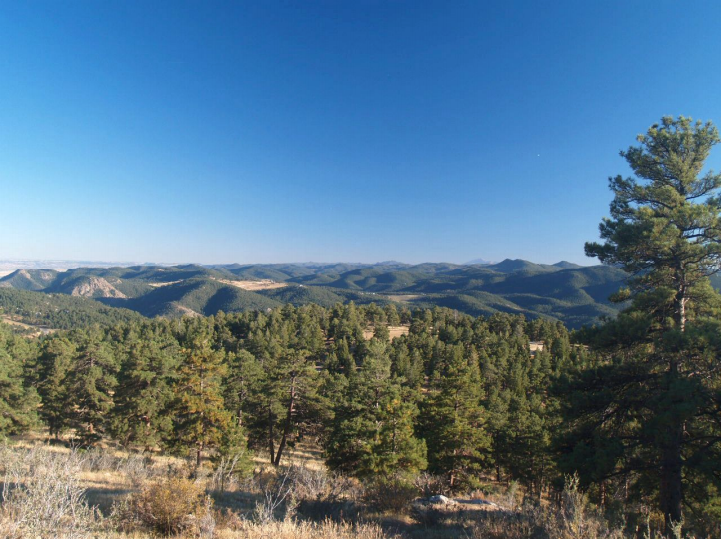by Michelle Poolet & Ann Bonnell
Website: gbbc.birdcount.org
 The Great Backyard Bird Count (GBBC) results are in, and it was a success, with 144,109 checklists submitted, 4,296 different species observed, and 17,748,756 individuals birds counted between February 14-17, 2014!
The Great Backyard Bird Count (GBBC) results are in, and it was a success, with 144,109 checklists submitted, 4,296 different species observed, and 17,748,756 individuals birds counted between February 14-17, 2014!
Browse the results online on the National Audubon/Cornell website:
Results for Jefferson County (Colorado): Jefferson County
Hot Spots for Jefferson County, which includes a number of Jeffco Open Space Parks: Hot Spots for Jefferson County
Results for the nation and worldwide: National and Worldwide Results
The GBBC is one of the more popular projects run by the Cornell Lab of Ornithology, powered by thousands of citizen-scientists located in nearly every corner of the world. These citizen-science participants are part of one of the world’s largest research teams, gathering data on a scale that would be impossible to achieve otherwise. Scientists analyze these data to understand how birds are affected by environmental change, including climate change, urbanization, pollution, and land use. Participants learn about birds and have opportunities to see their own data on maps along with those of thousands of other participants.
The next Great Backyard Bird Count is scheduled for Friday, February 13 through Monday, February 16, 2015.
Bird watchers and enthusiasts can also check out the following bird projects:
Project eBird »
Count birds anytime, anywhere. A real-time, online checklist program, eBird has revolutionized the way that the birding community reports and accesses information about birds. Launched in 2002 by the Cornell Lab of Ornithology and National Audubon Society, eBird provides rich data sources for basic information on bird abundance and distribution at a variety of spatial and temporal scales.
Other Citizen-Science Projects »
Find other citizen-science projects on the Cornell website.
Project FeederWatch »
Each year, 15,000 people count birds at their feeders for Project FeederWatch. With more than 1.5 million checklists submitted since 1987, FeederWatchers have contributed valuable data enabling scientists to monitor changes in the distribution and abundance of birds. Using FeederWatch data, scientists have studied the influence of nonnative species on native bird communities, examined the association between birds and habitats, and tracked unpredictable movements in winter bird populations. Participants gain from the rewarding experience of watching birds at their feeders and contributing their own observations to reveal larger patterns in bird populations across the continent.
Project NestWatch »
By finding and monitoring bird nests, NestWatch participants help scientists track the breeding success of birds across North America. Participants witness fascinating behaviors of birds at the nest and collect information on the location, habitat, bird species, number of eggs, and number of young. Scientists use these data to track the reproductive success of North American breeding birds across the continent. Launched in 2007 with funding from the National Science Foundation, NestWatch has collected more than 100,000 nesting records. Combined with historic data, this information will help scientists address how birds are affected by large-scale changes such as global climate change, urbanization, and land use.
Project Bird Cam »
By watching Bird Cams online, visitors from around the world enjoy live images and streaming videos of birds at their nests. Most recently, our Bird Cams have allowed viewers to follow the courtship, nesting, and chick-raising activities of Red-tailed Hawks, Great Blue Herons, and Osprey. Bird Cams are a unique learning experience for the study and appreciation of animal behavior, viewed by hundreds of thousands of people in more than 130 countries.
Project Celebrate Urban Birds »
Celebrate Urban Birds engages urban and rural residents in science, cultural, and community activities related to birds. Participants receive or download a free kit with posters, flower seeds, and data forms, then observe a small, defined bird-watching area for 10 minutes and report on the presence or absence of 16 species of birds. The project assesses the value of green spaces for birds, ranging in size from a potted plant to half a basketball court. Launched in 2007, Celebrate Urban Birds has partnered with nearly 5,000 community organizations and distributed more than 100,000 kits in English and Spanish. The National Forum on Children and Nature selected Celebrate Urban Birds as one of 30 nationally significant projects to connect children with the outdoors.
Project YardMap Network »
Now in Beta, the YardMap Network is an NSF-funded project that builds online communities to investigate the impacts of bird-friendly and carbon-neutral practices in backyards, community gardens, and parks. Participants will locate their yards or parks on a Google maps interface, then document their sustainable practices, such as adding native plants, putting up bird feeders, installing a solar panel, or biking to work. YardMap will serve as a detailed site description for the Cornell Lab of Ornithology’s citizen-science bird observations. By providing access to rich media resources for learning about sustainable practices and enabling people share their maps and practices with each other, YardMap strives to create online conservation communities engaged in real life sustainable practices. The YardMap Network will be tested and launched in 2011, in partnership with the National Audubon Society, U.S. Fish and Wildlife Service, Roger Tory Peterson Institute, Empire State College’s online alumni program, and the American Community Gardening Association.
Educational Articles »
Learn more about local bird species in Jefferson County, Colorado on the PLAN Jeffco Articles that Educate page.








